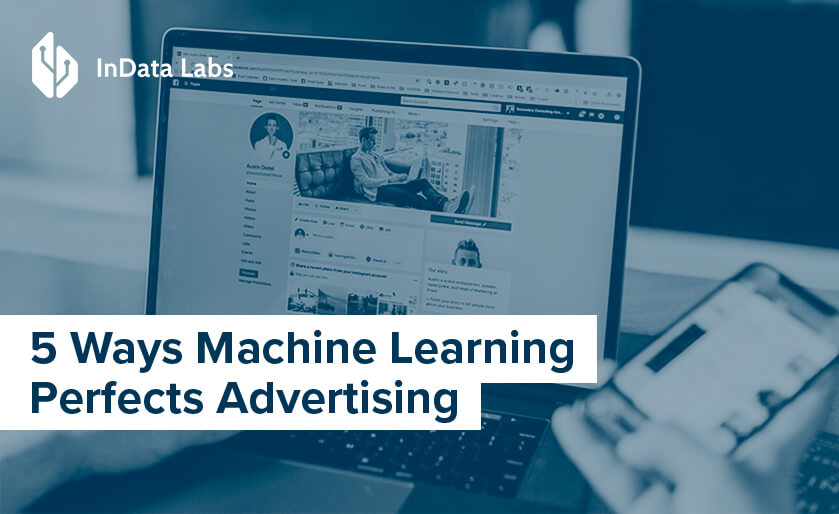Nowadays, AI in online learning and development is a hot topic in corporate circles on all scales. The majority of industry professionals and analysts believe that AI will shape our future. AI aims to incorporate human intellect into technology to produce systems that are more intelligent.
The question is: exactly how is AI changing these crucial skills? Discover how to enhance AI in online learning and development and what the future holds.
What is artificial intelligence?
Artificial intelligence (AI), which stands for systems or machines that resemble human intelligence to complete tasks and can develop and refine themselves based on the information they acquire, is most commonly used to describe such systems and machine-learning consulting. Artificial Intelligence software development can appear in a variety of ways.

Source: Unsplash
Machine Learning (ML) is a sort of AI, or more precisely, a method for achieving AI in which a computer program gradually gets better at a particular activity without input from a person. We will concentrate on machine learning and AI since it can be used to augment and enhance a wide variety of everyday tasks, making it the most applicable form of learning in AI for L&D professionals.
AI in online learning and development
Businesses are already interacting with customers and motivating them to take action using AI. The number of applications and use cases has increased significantly as organizations continue to invest in AI.
L&D can gain a significant competitive edge from AI. It explores countless new possibilities by adapting to the demands of contemporary learners. Learn about the incredible potential and the fascinating future of AI in online learning and development.
Measure effectiveness
To be profitable is the key objective while running retail if you want to stay in business and keep up the AI trend in retailing. Additionally, you must learn how to work successfully and efficiently before you can be profitable.
It has been quite challenging to assess a learning program’s effectiveness. Although time-consuming, averaging learning process performance is quite important. When L&D experts employ AI tools, they swiftly gather and analyze data to gain specific insights into the efficacy of AI in online learning.

Source: Unsplash
The most effective learning decision tool can be created by breaking down program performance, learning material performance, and learner performance and connecting them to business outcomes. Instead of crossing their fingers and praying they got it right, this enables learning experts to tweak their training programs as they go.
Personalize the learning experience
Each person has a unique style of gathering and processing information. Each employee will have a favorite learning technique and will do their best with that approach. This could be done using audio-guided presentations, written content, in-person training, video tutorials, gamification, or another method. This explains why there are so many diverse theories and methods for learning.
The personalization of this adaptive learning is one of the main advantages of AI-backed learning and development. Training programs may now be adjusted to each employee’s needs thanks to AI. According to the learner’s pace, age, gender, and demographics, AI can customize their education.
Individuals can organize their individualized learning materials, With AI and learning and development, they can choose their objectives and obtain content based on their learning preferences and styles.

Better learning AI solutions outcomes are produced when deeper learning is combined with higher engagement. As they receive information tailored to their own tastes and goals, employees accomplish their learning objectives more quickly. A company’s learning investment will yield a profit with improved learning outcomes.
Know the learning gaps
Businesses may find it easier and more cost-effective to train staff in certain areas and increase their competence if they can identify the knowledge gaps in their workforce. Your business will benefit from this, and your staff will remain interested because they are learning new things.

Source: Unsplash
Big data science sources can be computed, combined, and used by AI to determine where a person’s knowledge is lacking. The creation of learner profiles based on these contradictory pieces of information can then improve the overall learning process and impart new abilities to an employee.
Offer appropriate content
Similar to Google, AI can automatically propose the most pertinent stuff by searching the internet, your LMS, your own content, and other sources. Because learners don’t have to spend hours manually sifting through numerous pages of search results, these learning methods in AI help learners save time.
Making AI latest development and the foundation of the entire learning platform gives L&D the chance to provide admins with new tools to create more immersive and customized learning experiences while automating tedious activities. Without the requirement for an administrator to manually tag the information, learners can utilize the platform’s global search to identify the most pertinent content for them.

Source: Unsplash
Additionally, based on their previous content, learners can invite other learners to read their published content. The best part is that nothing ever interferes with the learning process because everything takes place in the background.
Collect important insights
Making sense of all the data and exploiting the insights to produce business value is the challenge for L&D. Continuous data collection can be handled by AI in learning and development, allowing for always-informed business decisions.
AI integration offers more automation, personalization, data insights, machine-learning solutions, and sustainability than before. The data can be used by businesses to gain an understanding of their AI for learning and development. They can learn about the success of courses, potential problem areas, and significant trends and patterns.

Automate
AI can be used to create learning platforms that store, track, and provide all data, programs, training materials, and schedules based on each learner’s experience, preferences, and objectives. These sophisticated algorithms allow your learning platform to carry out some of the tasks that you would typically carry out manually as a learner or an administrator.
For examples of AI in learning and development, your learning platform can currently assess almost all of the various forms of content that you are adding to your platform in a safe and secure manner. Additionally, it can figure out how to improve and streamline the learning process.

Source: Unsplash
Additionally, based on their previous content, learners can invite other learners to read their published content. The finest part is that nothing ever interferes with the learning process because everything takes place in the background.
AI-based digital tutor
Digital coaches powered by AI have already been utilized to efficiently replace coaches, speakers, lecturers, and teachers. They can imitate the expert-novice connection and learning encounters, assist students with questions, plan ahead and offer learning tools.
The most recent in digital technology is being used by L&D experts to create blended learning in AI strategy that mixes traditional classroom lectures with materials. Additionally, they are utilizing microlearning, which divides lessons into shorter, quicker-to-create chunks.
FAQ
Take a look at some questions related to AI and learning.
What are the 4 types of AI?
There are four categories of artificial intelligence (AI) or AI-based systems, according to this classification scheme: limited memory machines, reactive machines, self-aware AI, and theory of mind.
Can AI help with performance management?
Performance management with AI is entirely data-driven. It doesn’t have any preferences of its own. It gathers data from various sources, removing the possibility of data errors. Therefore, AI can assist managers in giving employees and the organization unbiased feedback.
What is the problem with data bias when training AI machines?
Lack of training in data collection is a significant factor in the bias issue in AI. Or, more accurately, there are some demographic groupings for which there aren’t enough reliable training data.
Conclusion
Learners will eventually be able to get training information tailored to their preferences, skills, and personal attributes thanks to the application of AI in learning, training, and development. The entire L&D process can be considerably enhanced for both the employee and the company with the right investment in learning techniques in AI.
AI learning and development professionals should be aware of the quickly evolving technology and make use of it to improve learning. L&D specialists should investigate and use AI advancements to create new training tactics and methodologies.
AI solutions for learning and development
Schedule an intro consultation with our engineers to explore your idea and find out how we can help.



